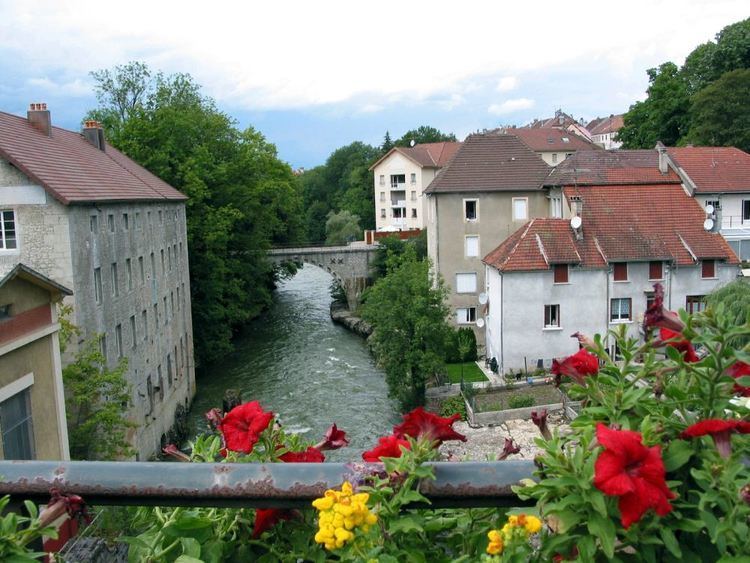Canton Champagnole Time zone CET (UTC+1) Local time Thursday 1:28 AM | Population (2012) 7,938 Area 20.18 km² | |
 | ||
Region Bourgogne-Franche-Comté Weather 7°C, Wind SW at 16 km/h, 95% Humidity | ||
Champagnole is a commune in the Jura department in Franche-Comté in eastern France.
Contents
Map of 39300 Champagnole, France
Geography
Champagnole has the publicity tag of "Pearl of the Jura" and is a small town at the geographical centre of Jura tourism. It stands on the right bank of the young River Ain at the foot of Mont Rivel (800m). It is around 130 km north east of Lyon, around 90 km south east of Dijon, and around 60 km north of Geneva.
Economy
Champagnole’s economic activity is principally industrial. The town is surrounded by blocks of forest so the exploitation of the timber and of its derivatives supplies the raw materials for furniture factories, including bathroom furniture. There is also a craft trade in box-making, wooden utensils and toys.
The presence of the Ain is the source of other industries at Champagnole: mills, iron and steel working, including specialist steels and drawing wire to special sections. The Forges de Syam, which are classed as an historic monument, are a proud representative of this metalworking tradition. A less obvious connection with the river lies in the aluminium foundry-work done at Champagnole but a speciality in this field usually goes with a supply of relatively cheap, hydroelectricity, a product of the Ain since the early 20th century. There are also printing works, plastic injection moulding factories, micro-mechanical workshops and optical laboratories producing spectacles.
Its food specialities are charcuterie or pork butchery, represented by fumé du Jura (smoked Jura ham); Comté (a cow’s milk cheese) or goat cheese, other milk products and honey (from spruce and from flowers).
History
The modern economy of the town is based on the economic assets of the region historically. Though it is normal to think of steel works in connection with extensive, flat sites and the proximity of coal, here iron-working began before the use of coal for the purpose was practical. The forest was needed to provide charcoal. The river in its steep bed provided power. There was plenty of limestone for smelting flux and some ferruginous limestone, though how useful that will have been as ore is not clear. (Compare Red Mountain, Birmingham, Alabama). Another consideration is the fact that Champagnole is so to speak, just over the hill from La Tène, the centre of late Iron Age culture. See La Tène culture.
Sights
Sports
Champagnole is a sporting town with all types of sports club including rugby, football, tennis, baseball, pétanque and handball.
